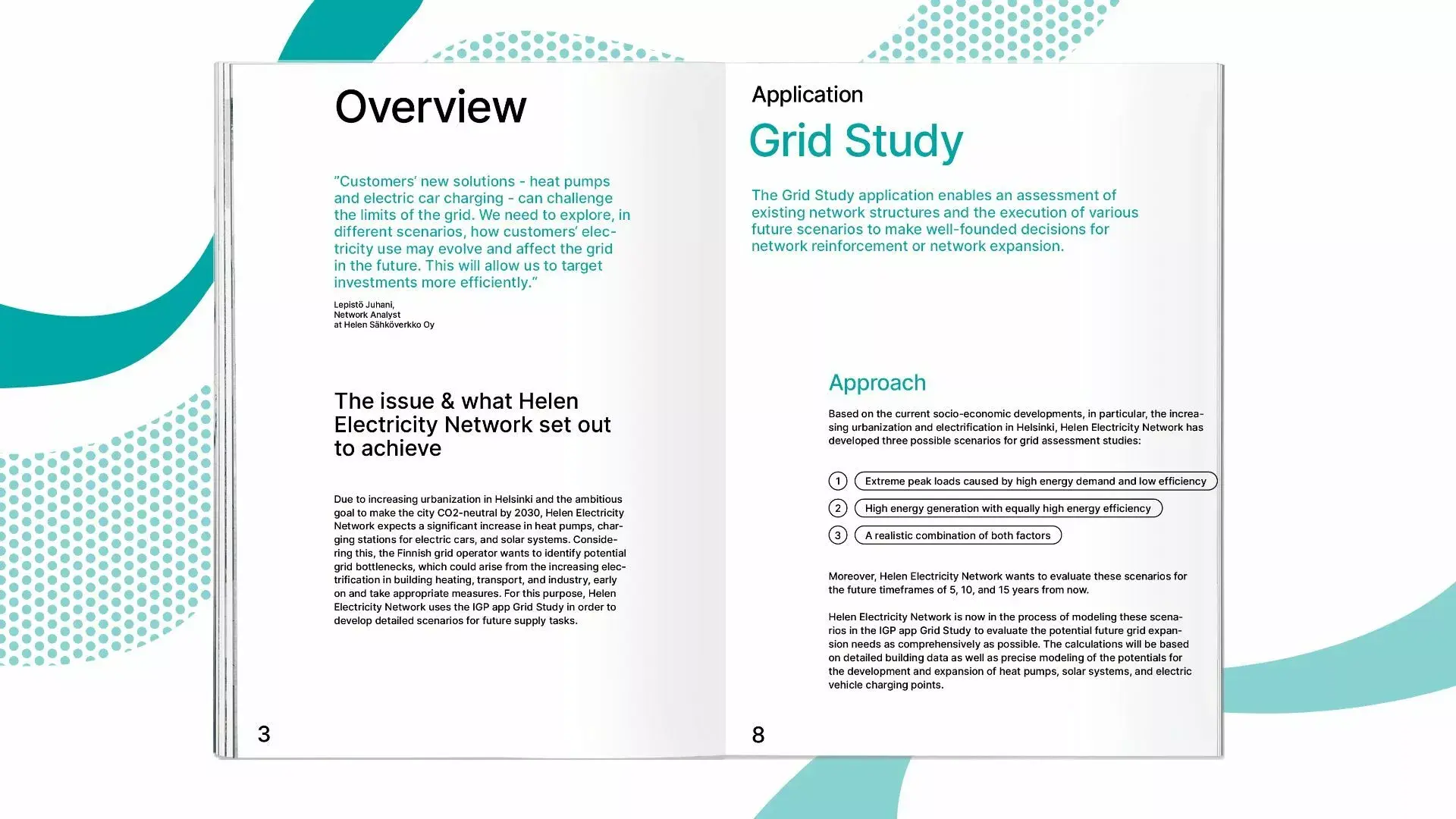The Road to Net Zero: How Helen Electricity Network is Preparing Helsinki‘s Power Grid for 2030 with the IGP

While Finland aims to be CO2-neutral by 2035, Helsinki has set the ambitious goal of becoming emission-free by 2030. This is not an easy task, as the majority of carbon emissions are caused by mobility and building heating. The city’s climate goals, therefore, require a massive transformation of the transport and heating sectors, which involves electrification on a grand scale.
As the largest energy provider in the region, Helen Electricity Network‘s electrical network is a crucial factor in this transition. However, this transformation poses a challenge for the power grid and requires extensive studies to better understand the impacts of these changes and prepare the grids for future loads.
In the case study, you’ll learn:
- Which socio-economic trends led to Helen Electricity Network’s decision to better understand how their grid will develop in the future
- What kind of 3 possible scenarios for future grid studies the Finnish grid operator developed based on these trends
- How Helen Electricity Network plans to evaluate these scenarios and what their next steps will be
Download the case study on future grid scenarios now:
You can get your copy of the case study straight away after submitting this form. If you have questions about future grid scenarios and how we can help you evaluate the impact of increasing electrification for your grid, you can add an optional message.
Contact person
Kerem Mermer
Making grids smarter
for a sustainable future worldwide!


